
 Margot Andersen has been working to support Aussie repats for a number of years. She founded Insync Network Group, a community designed to connect and support returning expats, both professionally and personally. She’s also the host of the podcast Boomeranging: Expat to Repat, interviews with Australians who have navigated career and life back home after years overseas.
Margot Andersen has been working to support Aussie repats for a number of years. She founded Insync Network Group, a community designed to connect and support returning expats, both professionally and personally. She’s also the host of the podcast Boomeranging: Expat to Repat, interviews with Australians who have navigated career and life back home after years overseas.
Margot reveals that it’s not always easy to find new work roles down under after a stint in Singapore. “On the podcast we’ve had a lot of conversations with recent repats and Aussies based in Singapore at the moment. Feedback from our network is that many Australians struggle to find roles in Australia after working overseas.”
This is reflected in the research that Advance, an Australian organisation that helps Aussies move and work overseas conducted in 2019 and in late 2020. It found that 85% of Australians are struggling with the job market back home and experienced barriers finding work back in Australia.
“If your career has met the challenge of living and working in Singapore, then you might think coming home will be easy,” says Margot. “In Singapore, chances are you have achieved amazing things you never thought you would – in both work and life. Read any current job ad and it seems every Australian employer is looking for agility, innovation and an ability to work in diverse teams; all expat traits. What Australian company wouldn’t want someone with Asian experience? But you might be shocked by the reality.”
Some expats are surprised to find their international experience isn’t seen as valuable by local recruiters. “As someone who works with returned expats, being told international experience is ‘not relevant’ is common feedback,” says Margo. “Research found two thirds of recruiters feel this way and that four in five recruiters feel reluctant or are cautious to recommend returned expats for Australian-based roles.”
Says Michael, a Regional Sales Director; “I have been told my eight years of international experience, half in Singapore, is difficult to translate because I’ve been out of the local market and can’t talk to local challenges.”
Getting prepared
Australia is a much smaller market than a global hub like Singapore, says Margot, and that makes a difference. “The focus is local and often very parochial, and many recruiters do not have an understanding of international job markets. The trick for expats is to be aware and to prepare accordingly, starting before you leave the Little Red Dot.”
It also pays to look further afield and be ready for an industry change when you land back home. “Despite two decades of leading card technology for global banks in Asia, Europe and the US, the big four Aussie banks didn’t seem to want to know me when I got home,” says Jan, GM and Board Director. “Eventually through my networks, I found my home and my people in the start-up sector.”
Research your market
That old adage, it’s who you know, will stand you in good stead during repatriation. “According to Advance research, 49% of expats eventually found a role through a connection, so start by identifying who you already know,” says Margot. “Who can help you understand the market? Who can introduce you to local recruiters and potential hiring managers?”
Before you fly out, update your networks in both Asia and Australia on what you’ve been up to. “If you haven’t kept in regular contact with your networks, ensure you educate them on your recent career moves,” advises Margot. “Australian journalist Bryce Corbett spent 10 years living in Paris working for the International Chamber of Commerce, yet when he came home, one person in his network referred to him as ‘the gossip columnist’, a role and life he had 15 years ago prior to life overseas.”
Localise your story
1 It pays to localise your business background and career achievements to cater to the Australian market. “Draw out universal proof points of your experience, including problems you solved, financial metrics you achieved, and teams that you managed, rather than focusing on countries you might have conquered,” advises Margot.
2 Be clear about your skill set. “Recruiters tend to look at your skills in isolation, rather than your combined skill set, so don’t assume they’ll automatically know what you can do based on your previous job title alone.”
3 Jump online and research local lingo in the job market. “When talking job titles, use an equivalent Australian title,” says Margot. “This ensures you’re on the same page as the recruiter and demonstrates you know how the local market works. If the brand you worked for in Singapore doesn’t exist in Australia, find an equivalent brand in the market so you can compare your experiences.”
 Contribute before you leave
Contribute before you leave
Investment professional Shane Masters tried three times to return home to Australia to a job after fifteen years overseas, finally cracking the code after he started to contribute to his industry from overseas by speaking at Australian conferences and contributing to trade articles. “Like Shane, it’s important to try and provide value back to your industry and get your name out there before you return home,” says Margot. “What insight or knowledge from Singapore could be useful to a similar organisation in Australia? Do you have a contact in Singapore that could help a local Australian business you might like to work for in the future?”
Connect with returned expats
There’s no better time to connect with fellow repats than when you’re re-entering the local job market. “Other Australian repatriates will understand your experience and the challenge of finding a job in the local market,” says Margot. “Seek them out to help with your education, potential job opportunities and importantly, for support.”
Having mates who understand what you’re going through will help you settle back into life in your home country. “Support is vital because chances are your job search is going to coincide with a giant dose of ‘reverse culture shock’,” says Margot. “The first weeks coming home are often a blur of logistics, re-establishing a home life, potentially settling kids into school. However, after a few months many former expats are hit with the full impact of reverse culture shock and this is where other repats become invaluable.”
Fellow expats also make great hirers. Chief People Officer and repat Jane Hollman says she now actively looks for Aussie expats to include in recruitment processes. “Having been an expat, I know expats are measured risk-takers, problem solvers and people who are experienced working with diverse teams. They can make great hires for dynamic organisations!”
insyncnetworkgroup.com
 The pandemic has forced many couples apart and created a change in relationship dynamics. The good news is that if you’re in a long-distance relationship, or contemplating one, technology has made them easier than ever—indeed, some couples are starting to realise the benefits of spending time apart. However, long-distance dating requires effort, understanding, and not to mention a strong wifi connection! Our friends from Pacific Prime Singapore provide five tips for keeping the spark alive despite the distance.
The pandemic has forced many couples apart and created a change in relationship dynamics. The good news is that if you’re in a long-distance relationship, or contemplating one, technology has made them easier than ever—indeed, some couples are starting to realise the benefits of spending time apart. However, long-distance dating requires effort, understanding, and not to mention a strong wifi connection! Our friends from Pacific Prime Singapore provide five tips for keeping the spark alive despite the distance.

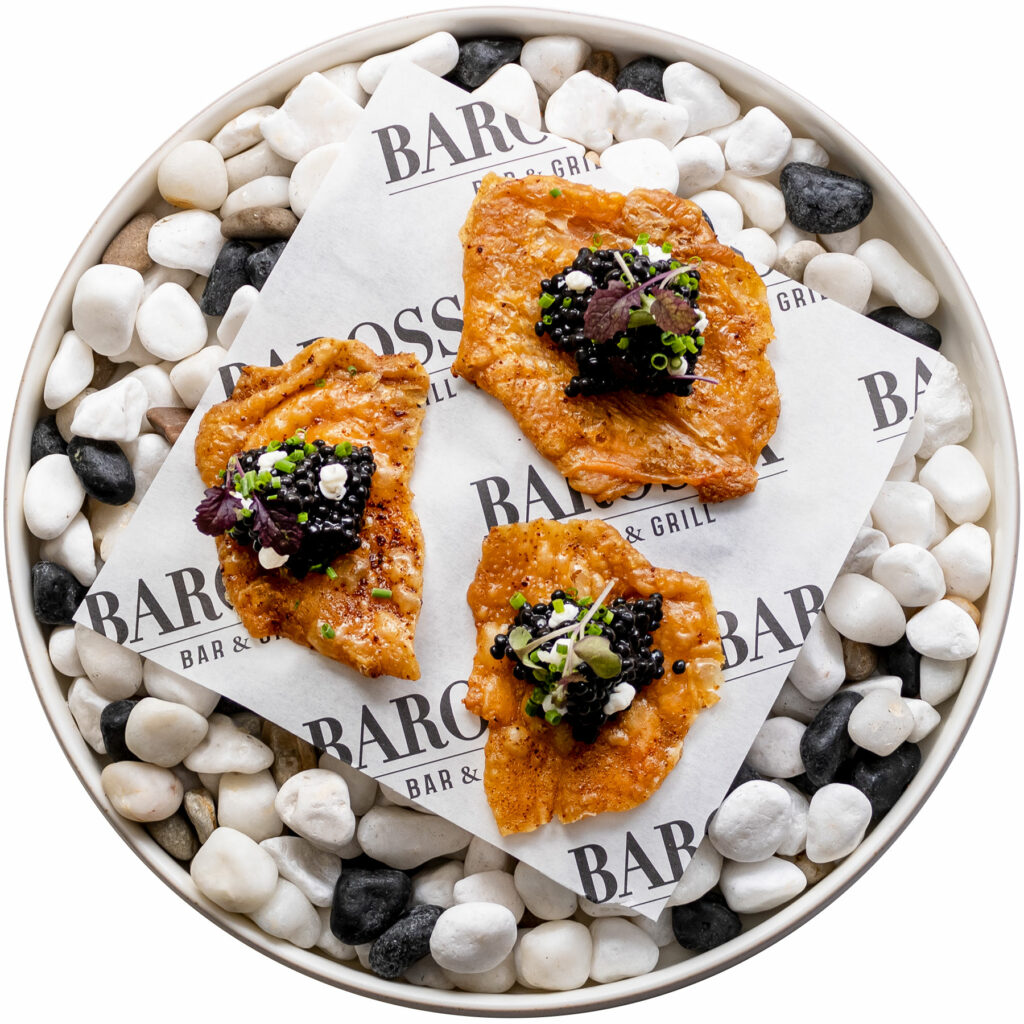 Overlooking the calm waters of Sentosa Island, the revamped Barossa Steak & Grill enters the Singapore’s steak house landscape showcasing some superb Australian beef cuts, a Josper oven-grill, and its own Dry Ager® specialty fridge.
Overlooking the calm waters of Sentosa Island, the revamped Barossa Steak & Grill enters the Singapore’s steak house landscape showcasing some superb Australian beef cuts, a Josper oven-grill, and its own Dry Ager® specialty fridge. This is followed by Tasmanian Salmon Rillete Cornet ($13), three delicious cones per plate filled with salmon rillette and topped with salmon roe, sour cream, and chives – the plate was clean almost as soon as they arrived. Next, a Chicken Chicharron with Avruga Caviar ($16). Perfectly crispy chicken skin topped with pickled onion, sour cream, and chives. A great fusion of textures and flavours made this dish a table favourite!
This is followed by Tasmanian Salmon Rillete Cornet ($13), three delicious cones per plate filled with salmon rillette and topped with salmon roe, sour cream, and chives – the plate was clean almost as soon as they arrived. Next, a Chicken Chicharron with Avruga Caviar ($16). Perfectly crispy chicken skin topped with pickled onion, sour cream, and chives. A great fusion of textures and flavours made this dish a table favourite!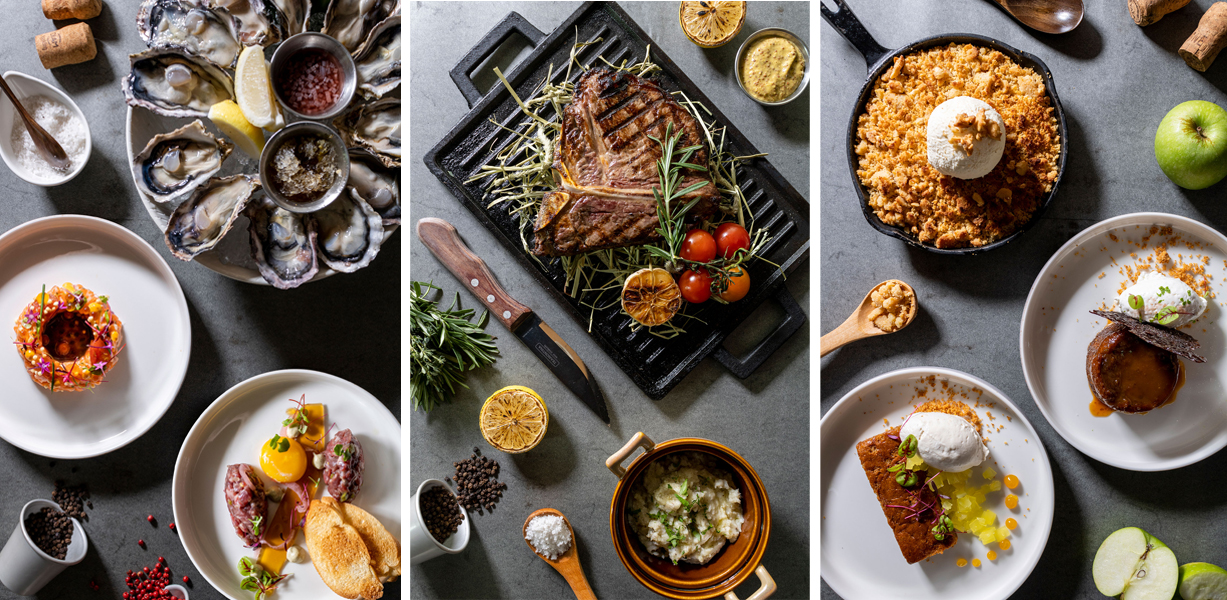 Next was the New Zealand Lamb Rack with Moroccan Spice ($48), perfectly cooked juicy lamb served with grilled chunky U.S. asparagus and a cumin brown sauce.
Next was the New Zealand Lamb Rack with Moroccan Spice ($48), perfectly cooked juicy lamb served with grilled chunky U.S. asparagus and a cumin brown sauce. To finish this amazing meal, a couple of desserts; Bombe Alaska Citron ($21); a beautiful dessert of cheesecake, yuzu sorbet, Meyer lemon curd mousse, and limoncello; and one of the chef’s signature desserts, the Honey Fig Mochi Cake ($19), consisting of Ume white chocolate, passionfruit gel, yuzu jelly, and honey fig mochi cake.
To finish this amazing meal, a couple of desserts; Bombe Alaska Citron ($21); a beautiful dessert of cheesecake, yuzu sorbet, Meyer lemon curd mousse, and limoncello; and one of the chef’s signature desserts, the Honey Fig Mochi Cake ($19), consisting of Ume white chocolate, passionfruit gel, yuzu jelly, and honey fig mochi cake.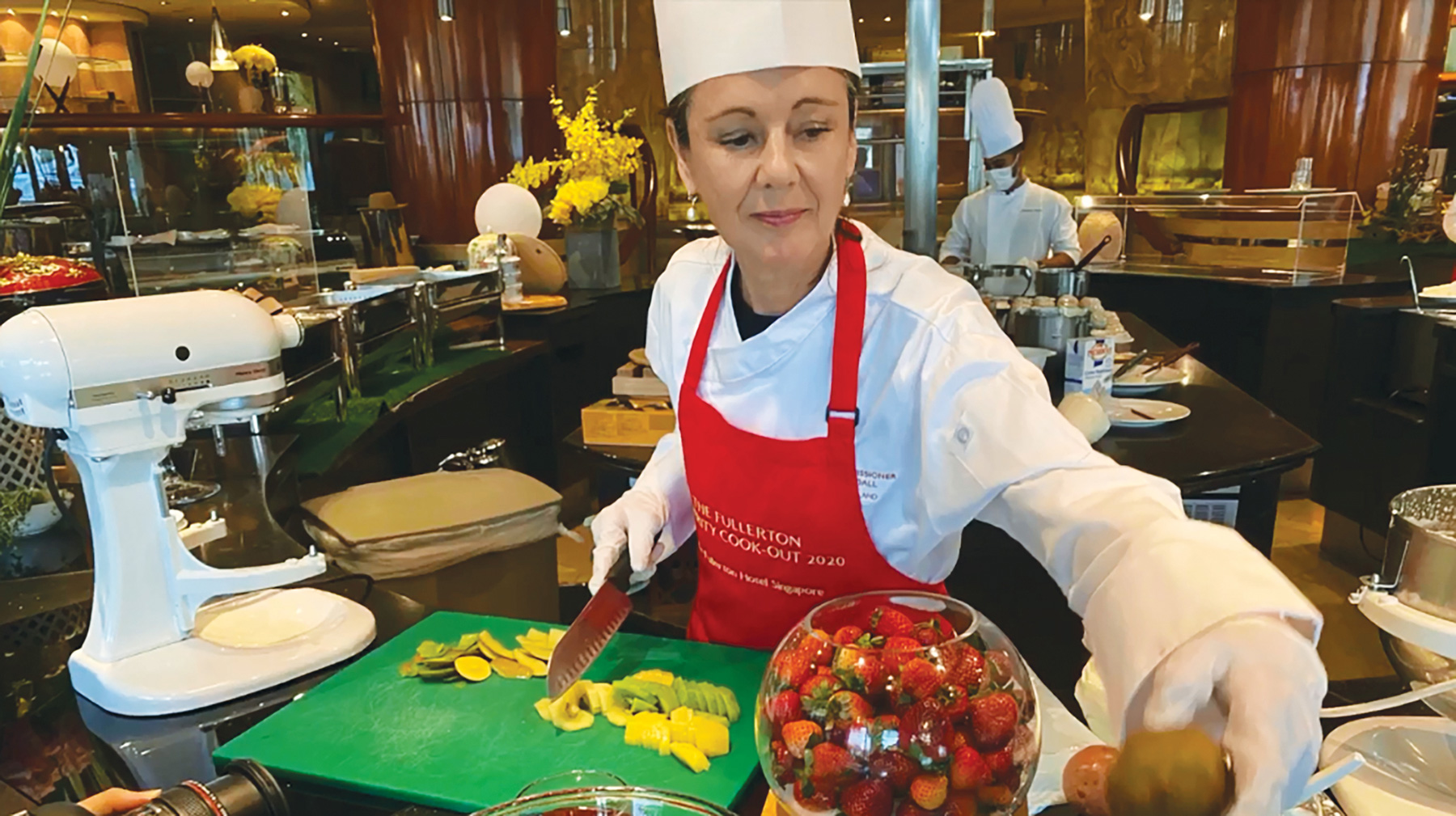 H
H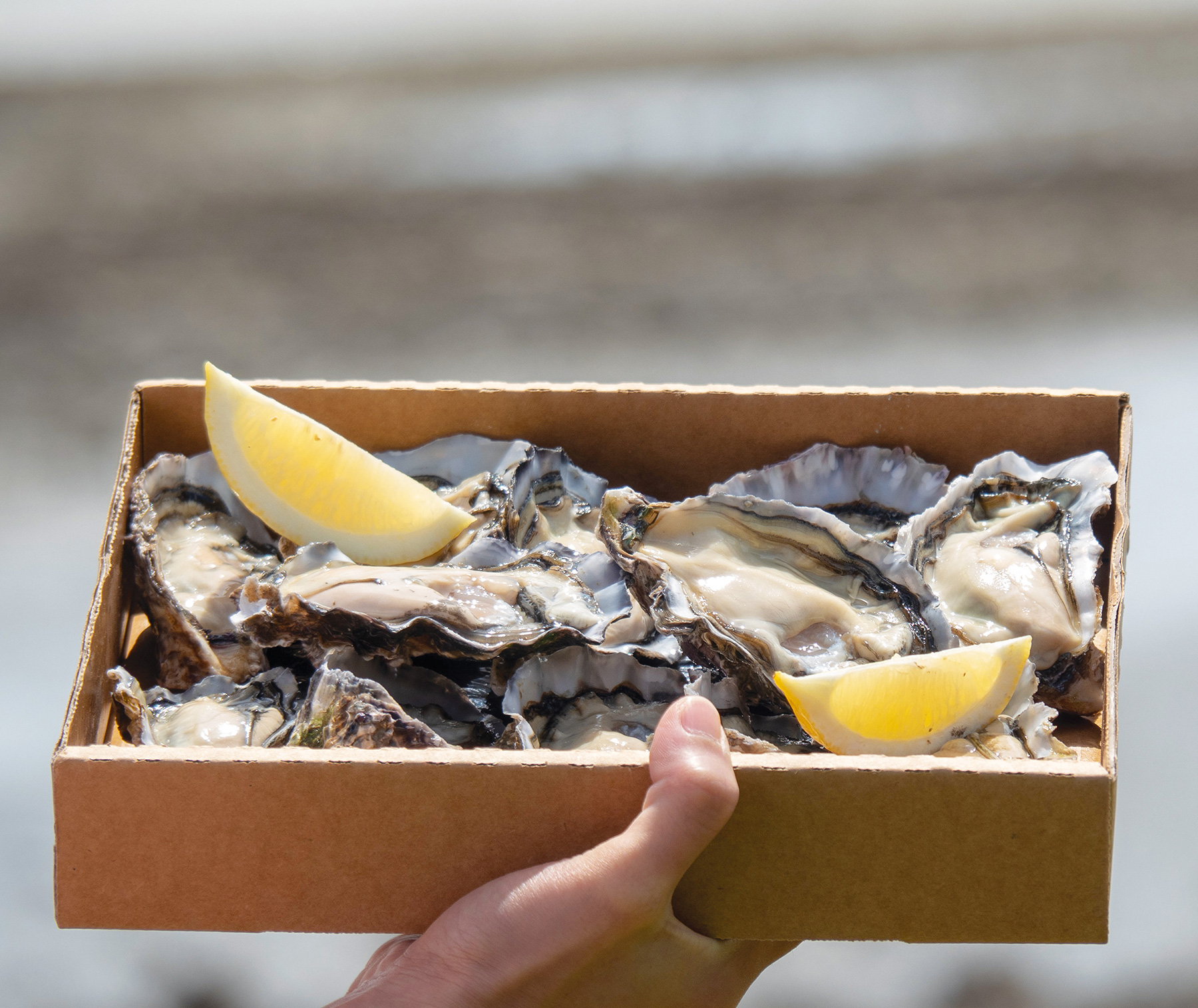 WHAT ARE SOME OF YOUR FAVOURITE NZ FOODS?
WHAT ARE SOME OF YOUR FAVOURITE NZ FOODS?
 From 16 to 30 September, SO/Singapore’s Xperience restaurant offers a glimpse of the kaleidoscopic beauty of Morocco. Its inviting dining area is filled with traditional colours, wares, goods, and the wonderful scents of Morocco’s vibrant cuisine; there are two set-menus available: lunch (58++) and dinner (78++).
From 16 to 30 September, SO/Singapore’s Xperience restaurant offers a glimpse of the kaleidoscopic beauty of Morocco. Its inviting dining area is filled with traditional colours, wares, goods, and the wonderful scents of Morocco’s vibrant cuisine; there are two set-menus available: lunch (58++) and dinner (78++). The meal started with the traditional Moroccan Salad, not a salad in the traditional sense, but a spread of small sharing dishes. Chef Sefia presented Taktouta – a delicious combination of bell peppers and tomatoes, slowly cooked with spices and herbs; Zaalouk, a bold dish of eggplant, tomatoes, garlic, olive oil and more wonderful spices; Foul Mcharmel, a tasty and spicy dish of fava beans; Barba Mcharmela, a zesty combination of beetroot and spices; Moroccan marinated olives – meaty olives spiced with harissa and a plate of fluffy Khobz, the staple flat bread of Morocco.
The meal started with the traditional Moroccan Salad, not a salad in the traditional sense, but a spread of small sharing dishes. Chef Sefia presented Taktouta – a delicious combination of bell peppers and tomatoes, slowly cooked with spices and herbs; Zaalouk, a bold dish of eggplant, tomatoes, garlic, olive oil and more wonderful spices; Foul Mcharmel, a tasty and spicy dish of fava beans; Barba Mcharmela, a zesty combination of beetroot and spices; Moroccan marinated olives – meaty olives spiced with harissa and a plate of fluffy Khobz, the staple flat bread of Morocco.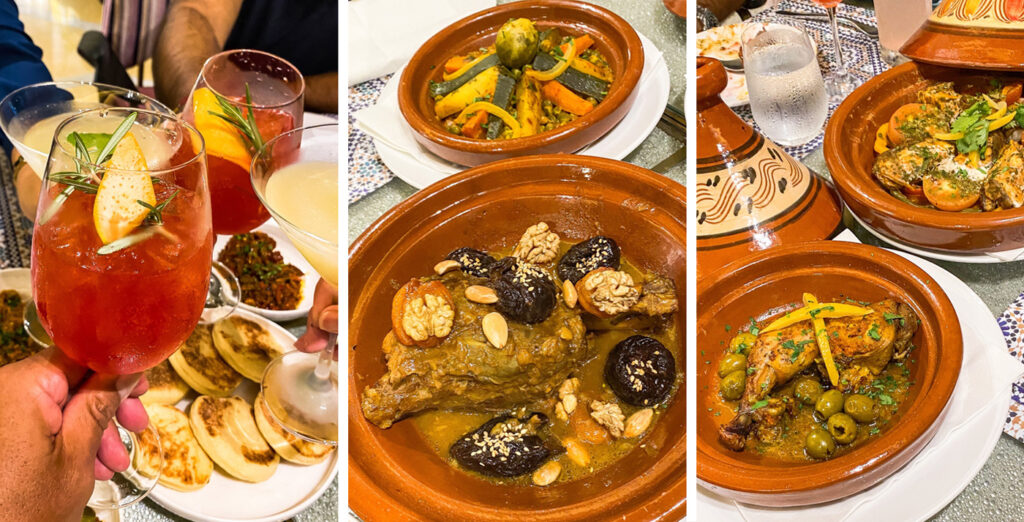 These scrumptious starters were followed by a bowl of Harira, a traditional soup prepared with lamb, chickpeas, lentils, and fresh herbs. Harira is an icon of Moroccan cuisine and is eaten all year around, especially during the holy month of Ramadan. Everyone at the table agreed this version was an all-around winner.
These scrumptious starters were followed by a bowl of Harira, a traditional soup prepared with lamb, chickpeas, lentils, and fresh herbs. Harira is an icon of Moroccan cuisine and is eaten all year around, especially during the holy month of Ramadan. Everyone at the table agreed this version was an all-around winner.
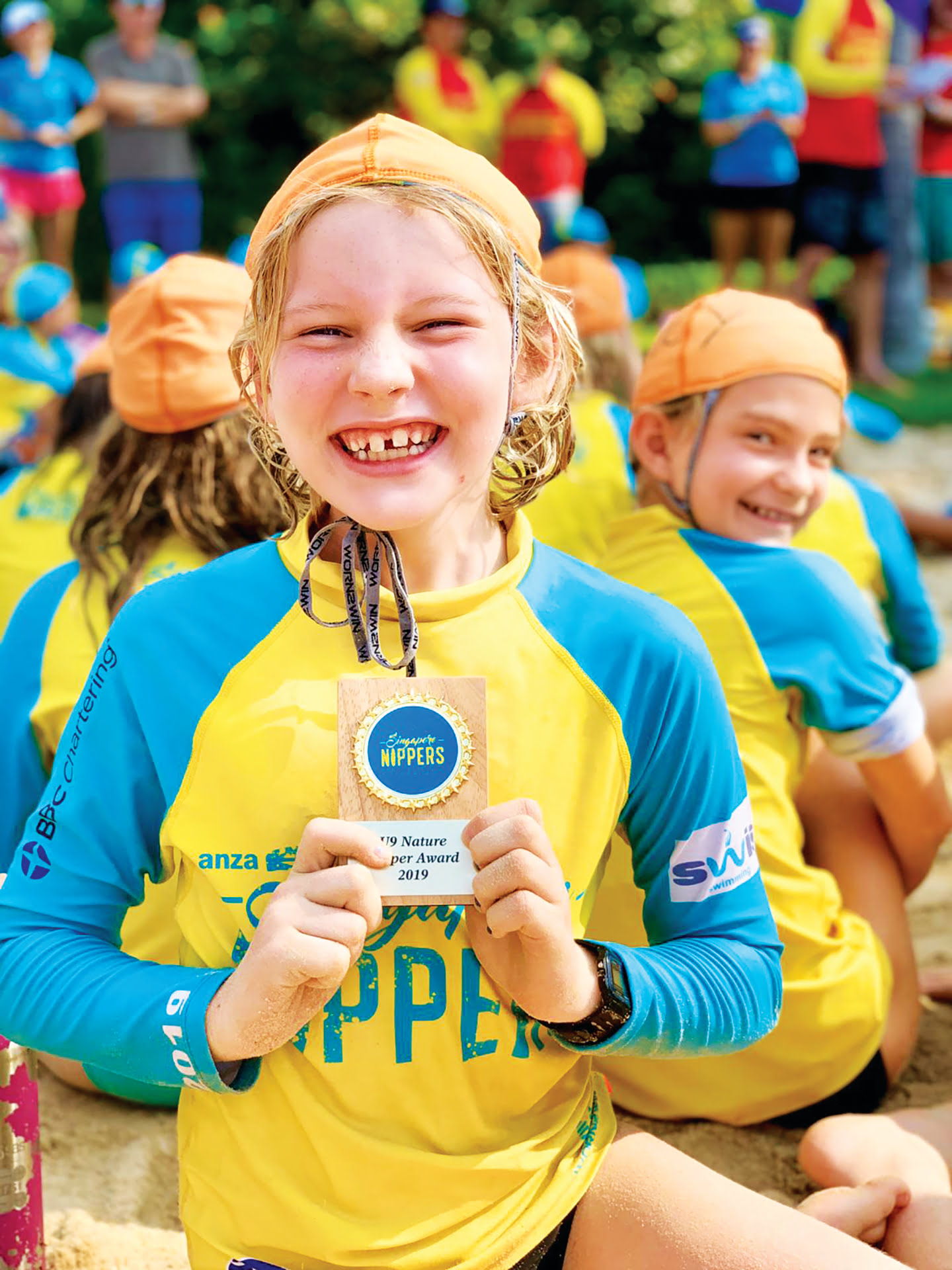
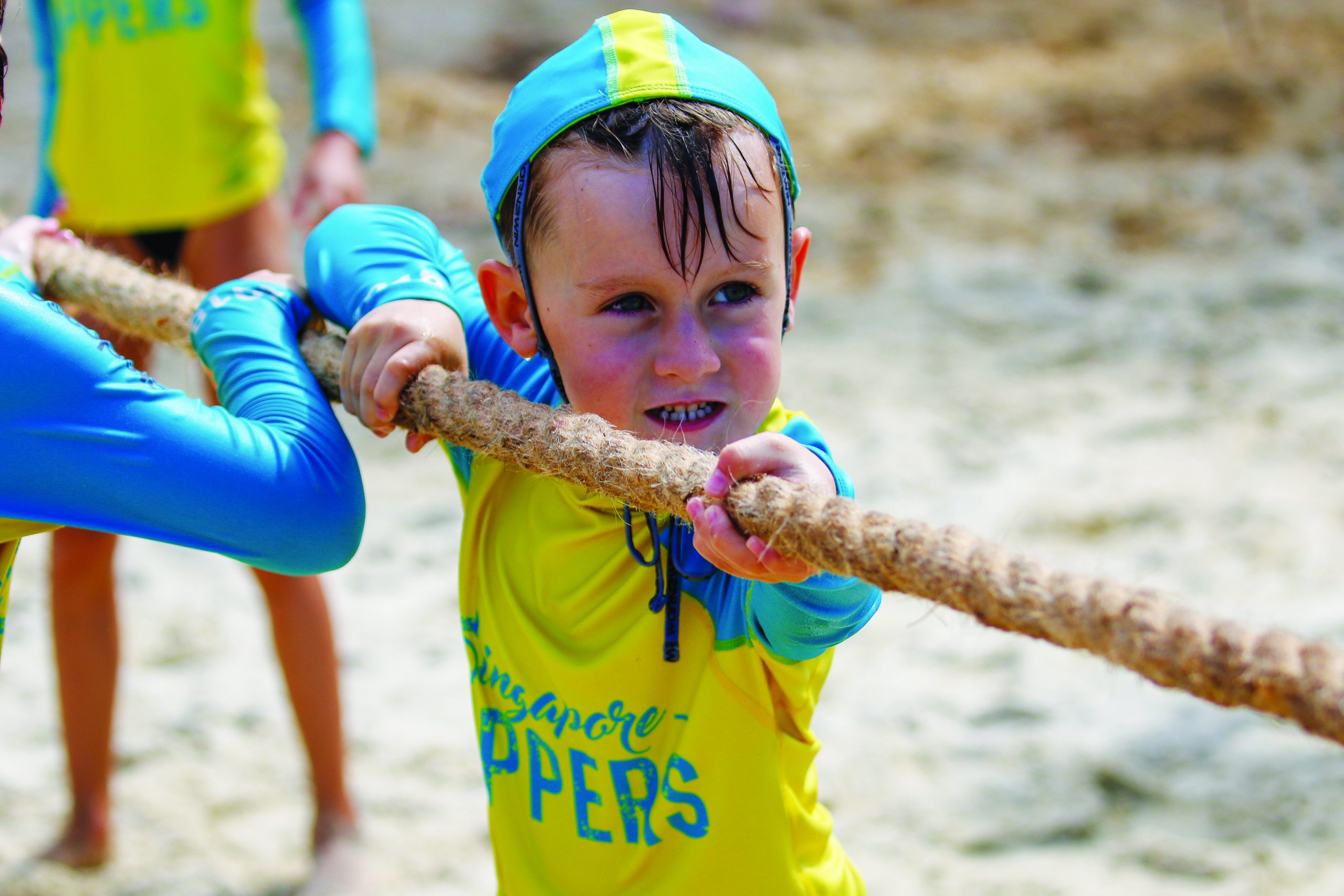
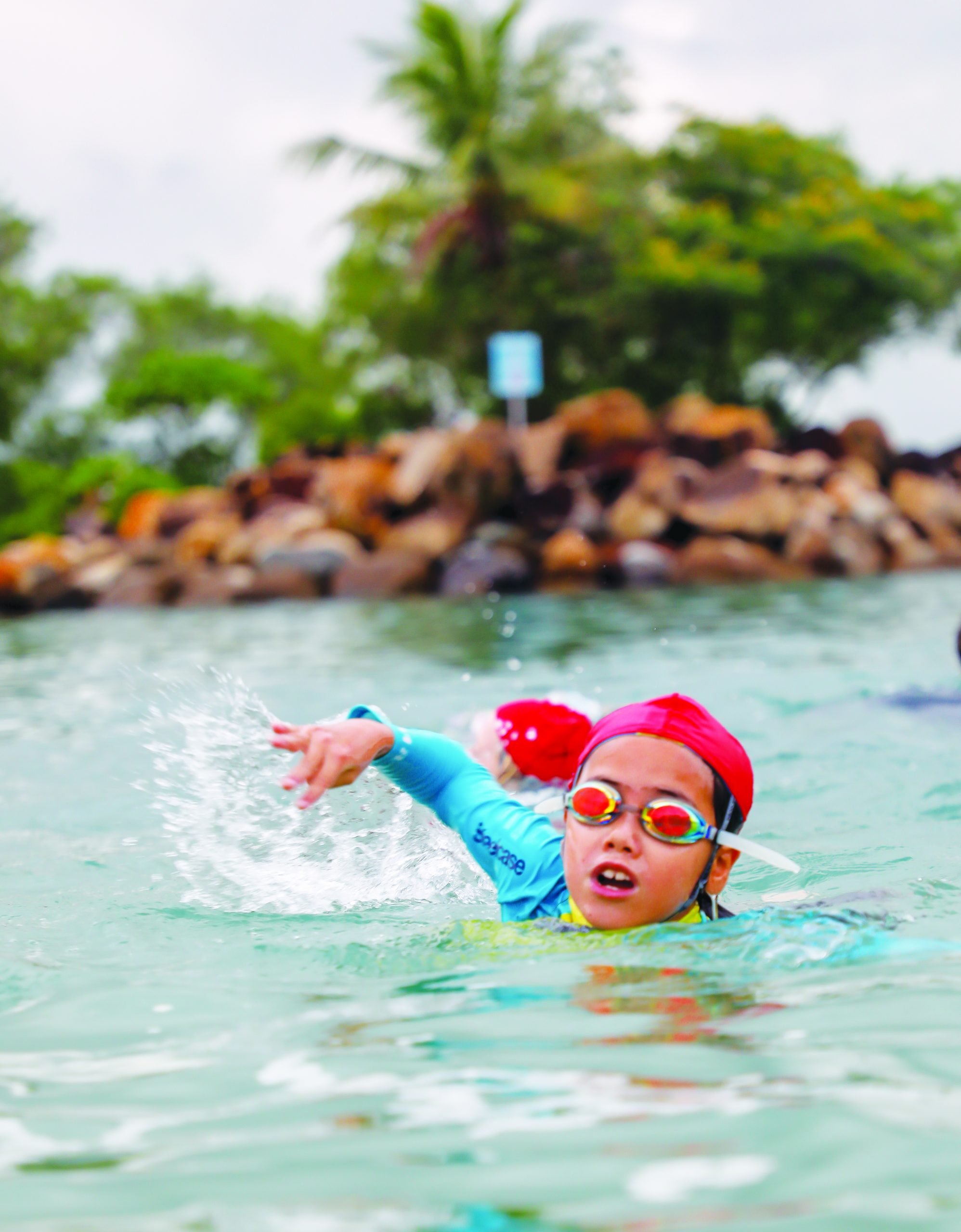
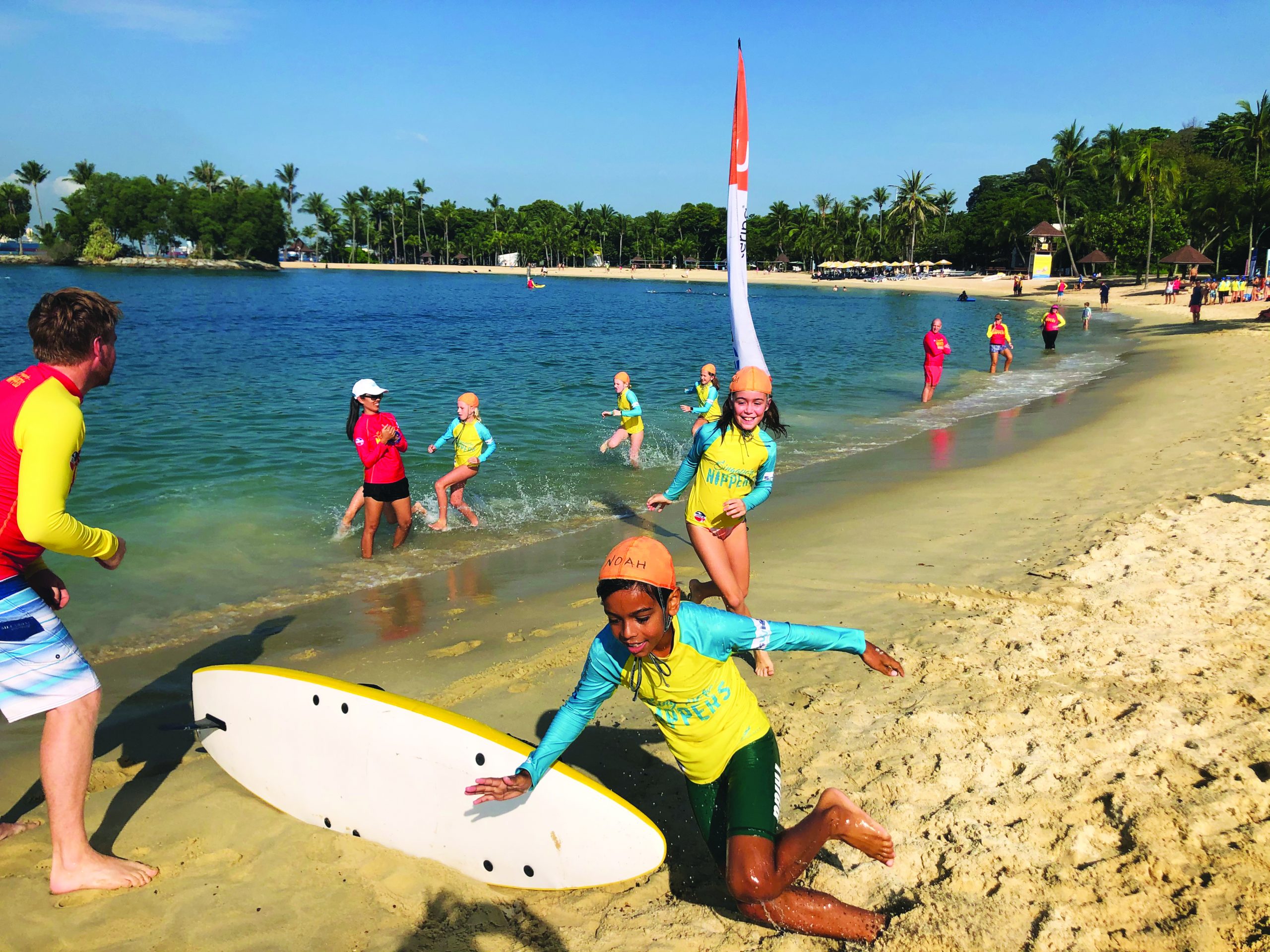

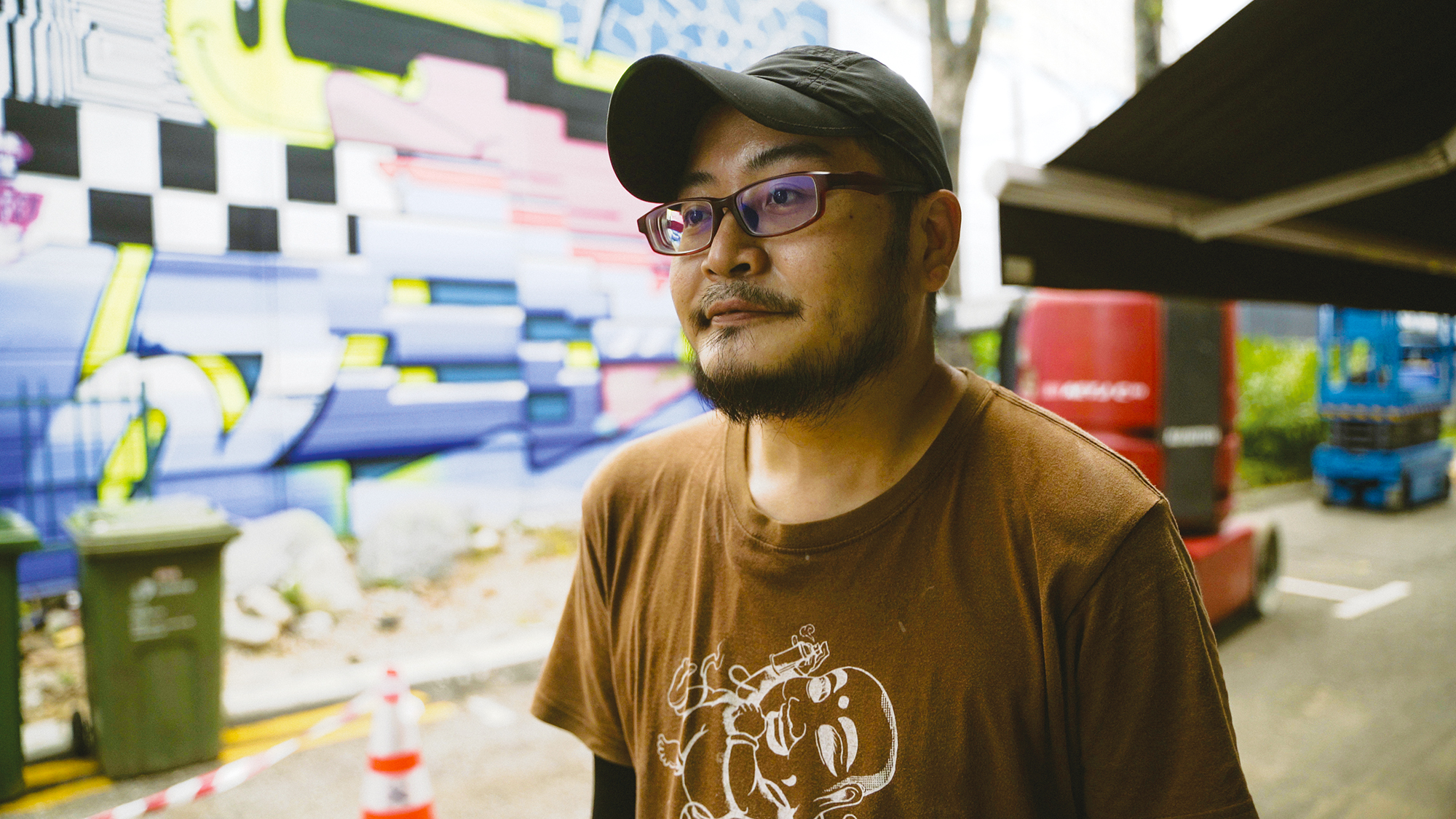 O
O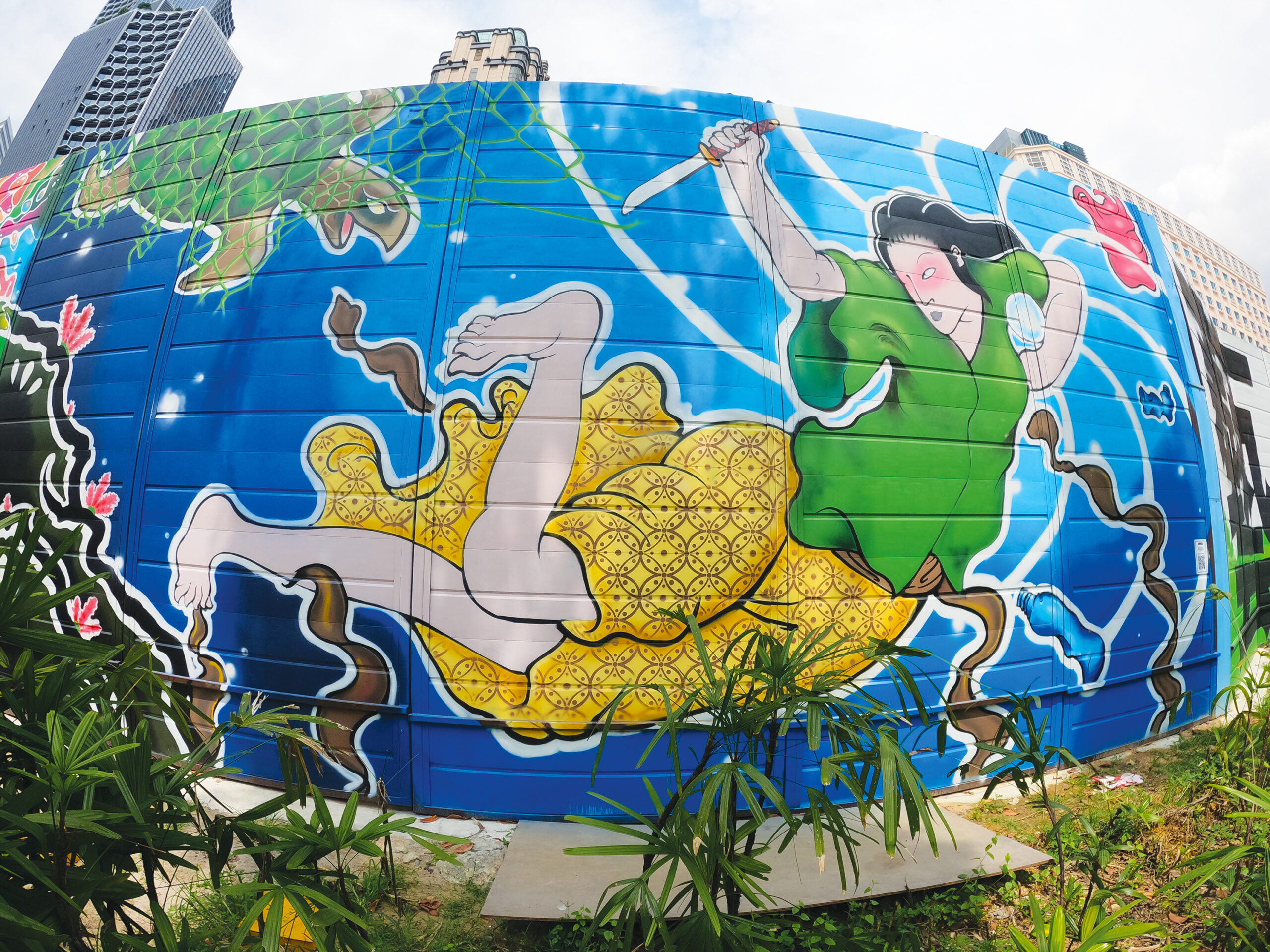 Where can we see your art?
Where can we see your art?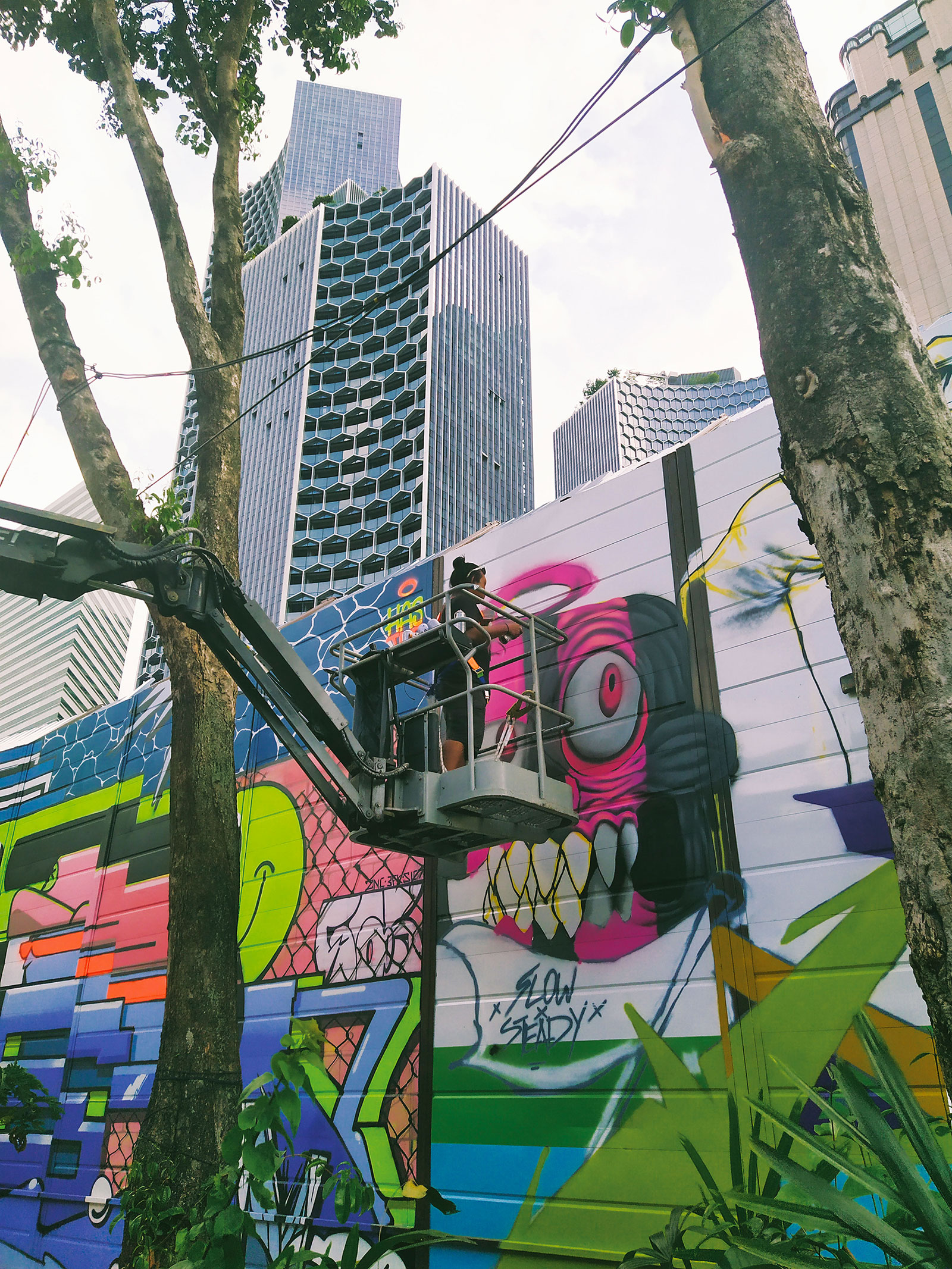 How has Kampong Gelam changed the public perception of street art here?
How has Kampong Gelam changed the public perception of street art here? What are some defining street art moments?
What are some defining street art moments?

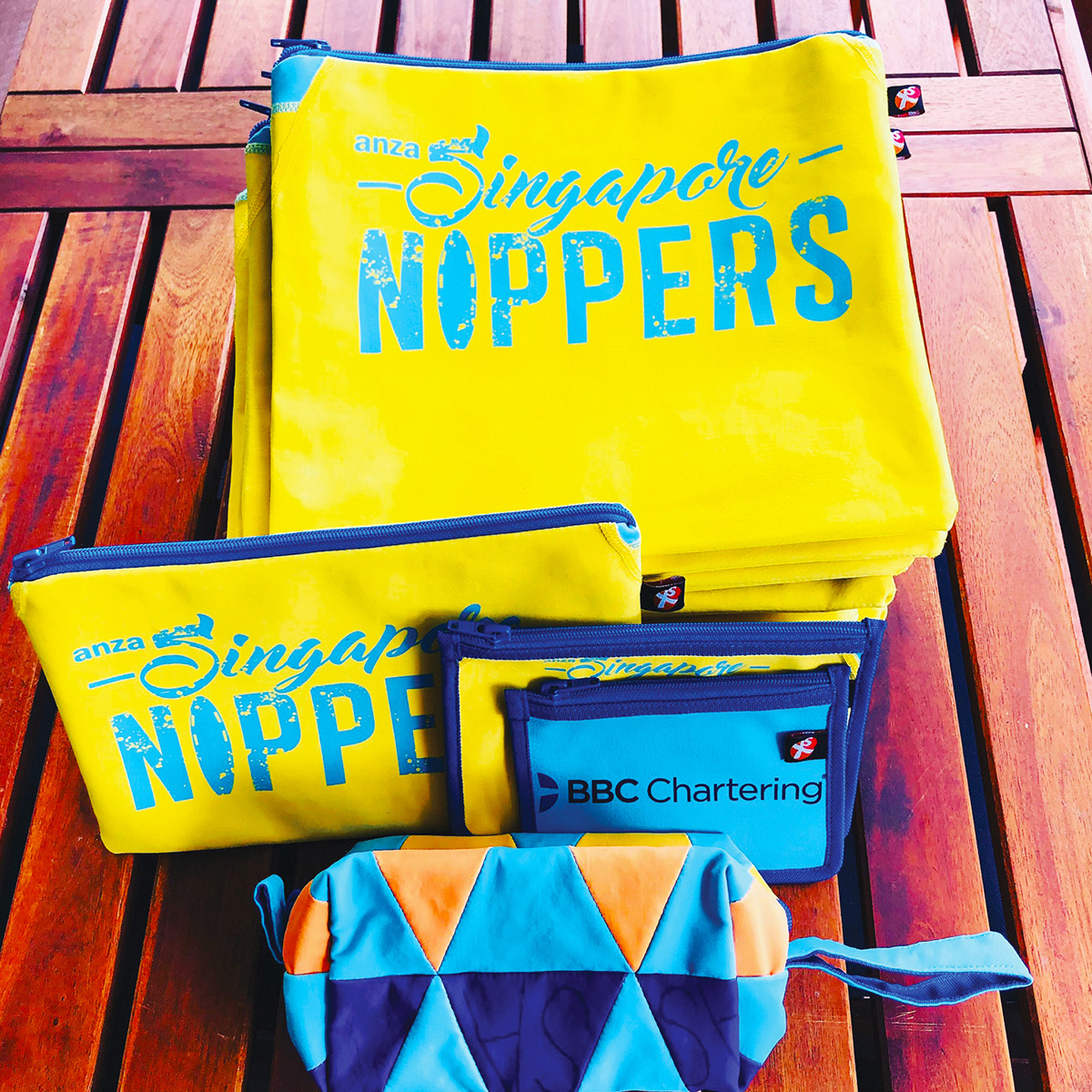 A
A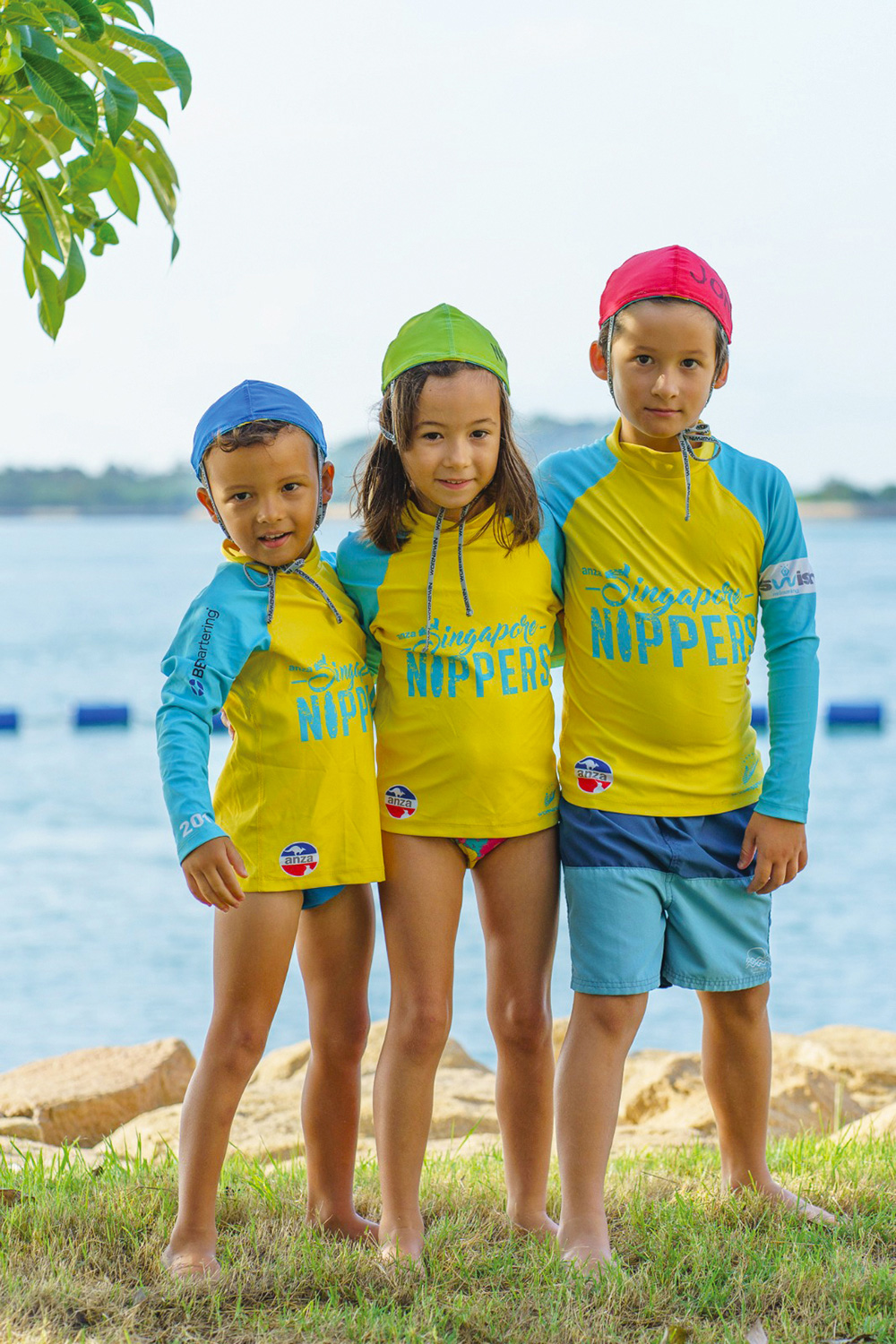 Children’s swim caps, scribbled with their names in permanent markers, were dissembled and patched up again to form brightly coloured toiletries pouches. Four swim caps were repurposed into one pouch, distinctively featuring member’s names to add charm. Parents recognise their children’s names on the pouches and children can keep their swim cap as a new sunscreen or goggle holder for their next season on the beach.
Children’s swim caps, scribbled with their names in permanent markers, were dissembled and patched up again to form brightly coloured toiletries pouches. Four swim caps were repurposed into one pouch, distinctively featuring member’s names to add charm. Parents recognise their children’s names on the pouches and children can keep their swim cap as a new sunscreen or goggle holder for their next season on the beach.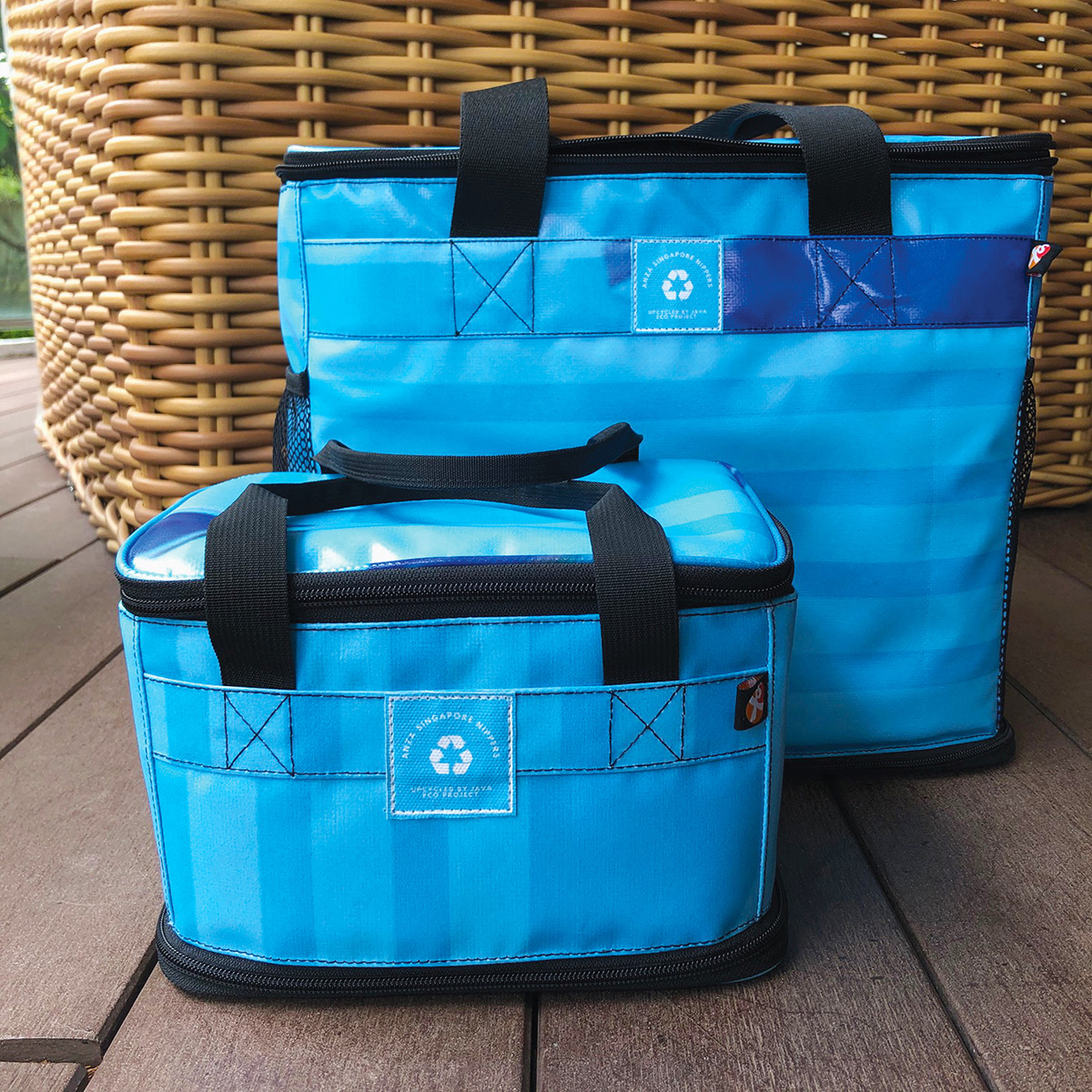 Purchase your Nippers Eco Project upcycled product today at
Purchase your Nippers Eco Project upcycled product today at 
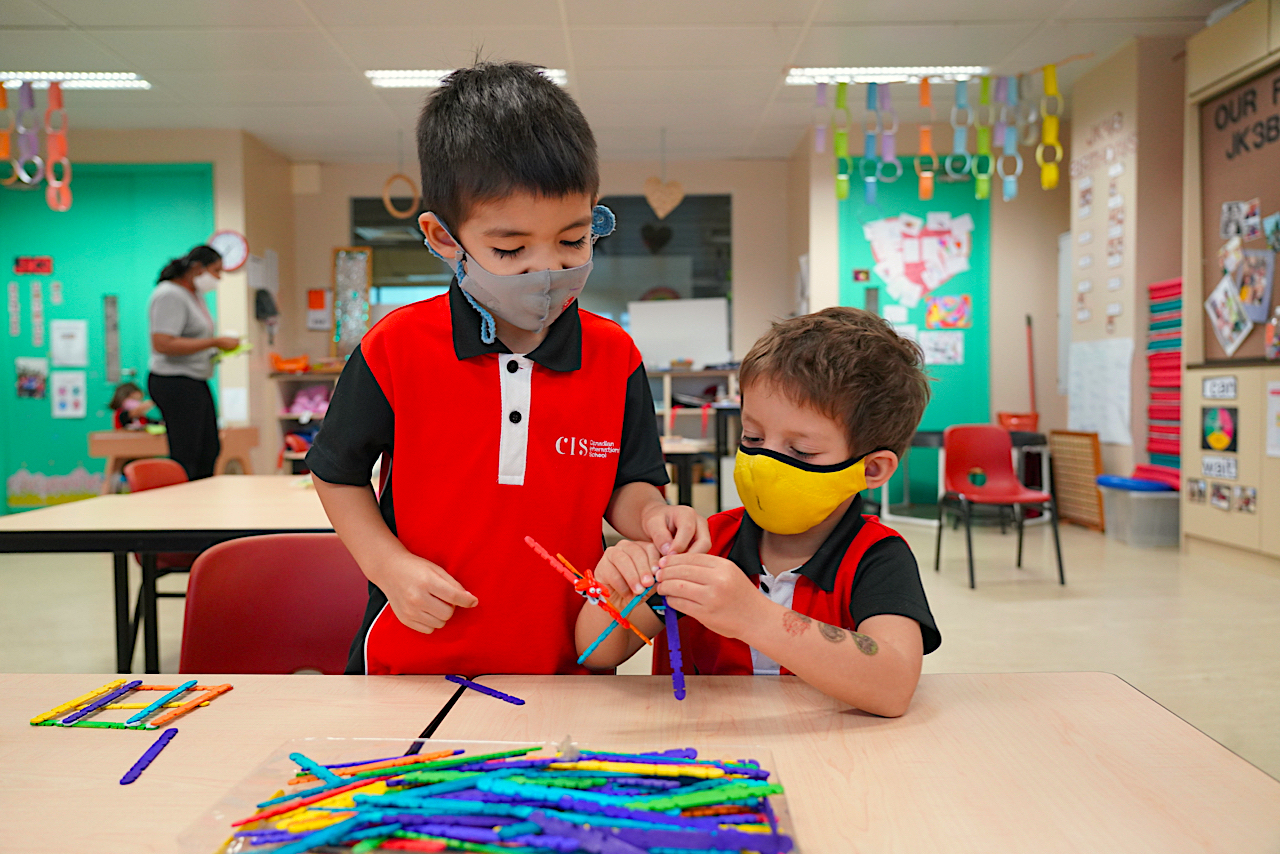


 M
M Contribute before you leave
Contribute before you leave